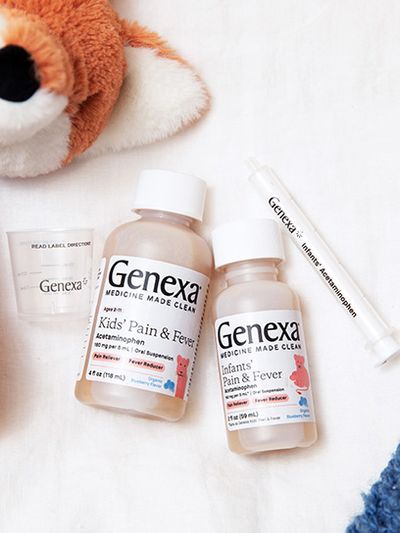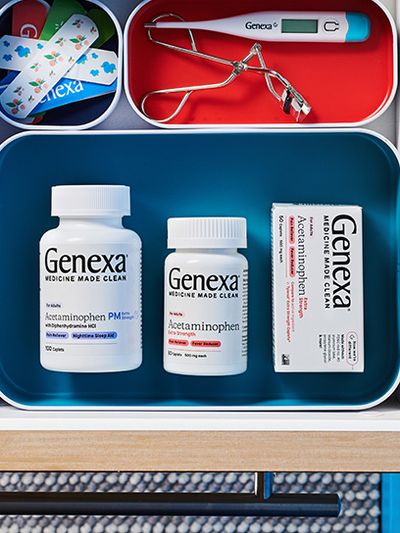How To Get Rid Of A Headache After Crying
Why Do Our Kids Have Headaches After They Cry?
Written by Dr. Deanna Minich - Genexa Medical Advisory Board and Partner on June 7, 2021
Crying, especially in kids, is normal. While many of us try to hide our tears, crying is an emotional release that’s an important part of expressing how you feel.
Kids, of course, cry more often than adults. But after crying for one reason or another, many kids experience mild headaches that can stick around for just a few minutes or up to a day or more. Many adults have also experienced this phenomenon. In fact, there are several reasons why you might experience a headache after crying. Fortunately, there are also plenty of ways you can get rid of headaches that come on fast.
Let’s take a look at some of these kids’ headache treatments now, plus go over why your kids might experience headaches after crying in the first place.
Why Do Kids Get Headaches After Crying?
In truth, there’s no single or easy answer as to why kids – and adults – so often get headaches after a good cry. However, there is plenty of evidence that it’s related to the physiological side effects of crying for more than a couple of minutes.
Specifically, crying often causes significant muscle tension around the head, neck, and jaw. It's therefore no surprise that many kids experience mild tension headaches (more on those below) after crying for even a little while. Additionally, headaches might crop up after crying due to a certain type of tears your body produces.
There are three types of tears made by your body in total: basal tears, which keep your eyes moist, reflex tears, which protect your eyes when there is an irritant in the air like smoke, and emotional tears, which only happen during emotion versus acting as a type of involuntary reaction or reflex.
As parents well know, their kids might cry for all kinds of reasons. When they start tearing up, their brains produce a stress hormone called cortisol, which leads to inflammation around the head. In these cases, kids might experience either tension headaches or sinus headaches.
Bottom line: headaches can crop up for a number of reasons after crying. But it’s still important for parents to know how to get rid of headaches after the fact.
Tension Headaches vs. Sinus Headaches vs. Migraines
Let’s clear up some definitions about the different types of headaches your child might experience after crying:
- Tension headaches occur due to increased muscle tension in the muscles around the head. These may be more common if your child also has generalized muscle tension during periods of stress.
- Sinus headaches occur when sinus tissues inflame, especially if your child has been crying for a while. The headaches will be centered behind the eyes. They may also be more common if your child is also allergic to many common allergens, such as pollen or animal fur.
- Migraines are much more serious and severe. They should not be confused with regular headaches. Migraines are characterized by intense head pain and, oftentimes, visual stimuli like halos or flashes paired with light and sound sensitivity. Migraines don’t usually occur after crying, but if they do, you should contact a doctor right away.
Try to tell what type of headache your child is experiencing after they cry. Doing so can help you figure out the best treatment method so you can relieve their symptoms ASAP.
Ways To Treat Headaches After Crying
There are several ways in which you can treat headaches after crying. It all depends on the type of headache your child is experiencing.
Clean Medicine
Kids’ medicine can be a convenient way to relieve most types of mild headaches. However, it's important to give your child clean medicine that isn't full of unnecessary artificial inactive ingredients.
Fortunately, you can turn to brands like Genexa. They produce high-quality pain relief medicines that are perfect for kids who need a little soothing without the synthetic inactive ingredients found in many common OTC drugs.
In fact, Genexa’s Kids’ Pain & Fever formula has acetaminophen, which helps to both reduce fevers and reduce pain, including pain common to headaches, and real, non-GMO inactive ingredients.
Consider going with Genexa if you want real medicine made clean for your child. Genexa makes medicine with the same active ingredients you need, but without the artificial fillers. You’ll never have to worry about their medicine having unnecessary artificial additives, and you can rest assured it still includes proven ingredients.
Pain relief medicine can be a good choice for any of the above headache types, including tension and sinus headaches.
However, it may be important to you to give your child over-the-counter medicines that include aspirin if they are also suffering from a viral illness. Many kids cry when they feel uncomfortable due to uncomfortable symptoms.
But if they get a headache afterward, opt for non-aspirin solutions. Aspirin can occasionally cause significant side effects in kids if it’s taken while they are ill with a virus.
Rest in a Calm Environment
You might also consider having your child rest in a calm, non-stimulating environment. Have them lie down for a nap in their bedroom with the blinds closed, and many of their headache symptoms can start to vanish.
That’s because a calming, dark environment helps to soothe various irritated tissues around the eyes. Therefore, a calm environment could help to relieve sinus headaches.
It may also help with tension headaches. As your child rests in a calm area, their body will naturally relax, lowering the tension they might feel around their head and neck. If your child takes a nap, all the better – naps are great for relieving headaches both for kids and adults. Just make sure they don’t sleep for too long!
Apply a Cold or Hot Patch
There are plenty of commercially available hot and cold patches you can purchase at your local drugstore. These are great solutions for both tension and sinus headaches as the heat and cold can soothe irritated or inflamed tissues, plus help your child take a nap as their headache subsides. You can put them on your child’s forehead, neck, or around their jaw depending on where they’re most uncomfortable.
If you don’t want to purchase a hot or cold patch from the grocery store, you can make your own by soaking a comfortable washrag in hot or cold water. Just remember to refresh the water regularly so it keeps working.
Massages
Parents might also want to try giving their children a massage, especially if the child in question has a tension headache. Even a short massage around the head or neck can do wonders to relieve tense muscles that are causing discomfort.
Best of all, the soothing touch of a parent can frequently help a child to stop crying. There’s often little remedy better (at least experience-wise!) than some quality, personal attention from one of their parents.
Summary
As you can see, there are lots of ways to get rid of headaches after crying. It’s a good thing, too, since kids cry frequently until they get older!
It’s strongly recommended that you use multiple headache relief methods depending on what your child needs and how their headaches start.
Genexa is here to help no matter what medicine needs you have for your children. Contact them today to learn more about their mission and how they are reinventing the medicine industry.





